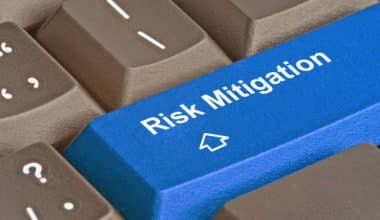Most organizations have a hierarchy in place that outlines the people, teams, or departments that each employee is in charge of. It is known as a “chain of command.” It enables every employee to clearly understand who they report to and those included in their team. To understand more about chain of command, we will discuss an example, its advantages and disadvantages, and their importance to a company’s management.
Chain of Command
This is a list of hierarchical individuals who answer to one another according to their levels of authority. An organizational chart that outlines the reporting relationships between each employee in a corporation is a “chain of command.” The founder, owner, or CEO would be at the top of the chart, and those who report to them would be immediately below. This procedure keeps repeating until the account contains every employee or degree of employment at the company. This was in place to provide a structure for knowledge exchange, share authority and duties, and also inform the staff of the company’s news. Additionally, it guarantees that each worker is accountable for their own task while simultaneously having a more senior leader available to provide assistance, encouragement, and incentive.
Hence, there is more to know about this chain of command, and we will be looking at its advantages and disadvantages soonest, to know how we can adopt it in our businesses.
Chain of Command Advantages and Disadvantages
There are advantages and disadvantages to having a chain of command in place, as there are with most things in a corporation. When determining whether to create a chain of command or maintain your current one, weigh these advantages and disadvantages:
The Advantages of a Chain of Command
The benefits of having this order in place include the following, to name a few:
#1. Improved Effectiveness
When an employee only reports to one person, they are more inclined to collaborate closely, which facilitates quicker communication and problem-solving. Consider a team member who is attempting to address a client issue as an example. Most likely, their direct boss is more knowledgeable about the workings of their department and the best course of action to take. Instead of moving to the next higher manager, an employee can get prompt, helpful advice from their immediate boss. If necessary, the supervisor can take the issue to higher management.
#2. Proper Guidance
A lack of a chain of authority can lead to employees receiving contradictory orders from different management figures. When moving forward with a task or project, a chain of authority makes it easier to avoid confusion or having to choose which boss to listen to.
#3. Stability
There is an expectation of employees that frequently have questions or require assistance with their work. It’s crucial that they have professional objectives and a support system. They can encounter these things because of the stability that a chain of authority offers. As a result of knowing exactly who to turn to for advice or assistance, an employee feels more in command of their position and more secure at work. A chain of authority, also helps employees understand what their manager’s intentions are and when management should intervene.
#4. Accountability
This order ensures that managers and supervisors have close working relationships with their direct reports and are more aware of their duties and the projects they are currently working on. As employees have someone guiding them toward success, this may result in higher accountability and productivity.
#5. Organized Responsibility
There is a certain duty for every employee who is in this order. With a chain of authority in place, everyone is aware of their responsibilities and what they have to do to accomplish goals and advance the business.
#6. Outside Understanding
With people outside the organization, some titles have a specific weight. For instance, a customer might ask to talk with a senior manager because they know that individual (the manager) can better address their issues.
Disadvantages of the Chain of Command
Even though the chain of command has advantages, it also has disadvantages. The drawbacks comprise:
#1. Reduced Cooperation
Everyone is to follow the rules and expectations set before them because individuals at the top of the hierarchy make them. Therefore, this chain of authority in an organization can have less cooperation at work. The authorities figure out what to do and how the organization should run, while employees and middle managers may have some autonomy in their jobs or a say in choices. A worker might never have the opportunity to get to know individuals above their direct superior if there is the high esteem in the chain of authority.
#2. Laggy Conversation
It can take some time if a query, worry, or suggestion needs to move up multiple rungs of the chain of command before senior management can answer or approve it. This may impact how quickly workers can finish a job or address a client complaint.
#3. A Reduction in Employee Empowerment
Without a chain of command, a company is more likely to encourage employee empowerment. It also provides its employees the freedom to choose how to handle their jobs or a particular circumstance. There can be a reduction of employee authority via a chain of authority.
#4. Increased Rivalry
With a chain of command, managers who make decisions could feel competitive with one another because they may feel protective of their staff and wish to exercise control over their group. Peer managers may start to distrust one another as a result of this.
Kinds of The Chain of Command
After looking at the advantages and disadvantages of a chain of command, it is beneficial to know the two different types, which are flat and vertical. Let us look at them one after another.
#1. A Flat Chain of Command
When a man’s rivalry exerts significant power over an organization, the chain of command is flat. This chain of power in such an organization may appear more flat or horizontal because they may have numerous people and teams reporting to them. In these kinds of hierarchies, a smaller number of middle managers and workers typically wield significant power and autonomy. Especially over their own work and environs.
Any sort of organization, regardless of size, can have a flat chain of power. But smaller companies are more likely to have one because they have fewer employees. The founder or owner of the company may come first, then middle management, and finally the group of employees.
#2. A Vertical Chain of Command
A vertical chain of command contains more levels and steps. Each manager often only has a small number of employees to oversee, which limits the scope of their authority to their department.
In an organization with a vertical chain of power, rules, methods, and procedures are more rigid and are established by the top executives, who then delegate information-dissemination duties to other managers.
Features of the Chain of Command
See what makes a good chain of command, and model it after those qualities and structures.
#1. Levels of Ranking
Because the ranks are arranged in a specific order, it is the most important characteristic of the system. When employees understand their roles and duties, they are better able to carry them out. As a result, the company benefits from increased order and efficiency.
#2. The Command’s Stability
Decisions can be more effective when the organization has a single point of authority. Due to the clear definition of decision-making responsibility, each choice is made by a single person. As a result, there will be no disagreements during the decision-making process.
#3. Responsibility
The chain of command gives its personnel the authority to make certain decisions. As a result, people have the ability to make judgments at various levels. Everyone takes responsibility for their own actions, which makes the process more efficient.
#4. Authority Delegation
A well-defined chain of command lays out exactly who has what authority. There is less confusion as to who can give and receive orders, making it easier for people to follow directions. Managers at all levels can assign authority to their subordinates, who can then represent them at a meeting.
#5. The Organizational Hierarchy
Another essential characteristic is that it aids in the management of different levels of the organization. An organization’s management structure is divided into three tiers:
- Highest Level: Goal setting and planning are done at the highest levels by those in top-level management.
- Middle Level: Managers in the middle of the organization are responsible for carrying out the strategy and making adjustments as needed.
- Lowest Level: Workers are closely monitored by these managers at the low levels.
#6. The Importance of Receiving and Responding to Feedback
The feedback rule is the final link in the chain of command. A company’s chain of command would be incomplete without the feedback rule. People in positions of authority solicit feedback from their subordinates regarding the decision-making process. Feedback is useful in making better decisions in the future.
People in positions of authority care for lower-level employees, as seen by this. Feedback is also taken in a hierarchical order in an organization. Rather than providing feedback to senior management, subordinates are more likely to do so.
Complaints are resolved by their immediate superiors and referred to upper management if the lower management is unable to resolve the issues themselves.
#7. Ensure that Your Company’s Language and Methods of Communication are Consistent Across the Board.
Employees at all levels of an organization should communicate using the same language. The formality of an organization’s communication is enhanced by using common language. In addition to using a common language, organizations also use a standardized style of communication.
However, a front-line supervisor will report to the middle manager and not the senior boss. Middle managers receive orders and instructions from their superiors in the same way. When there is a clear channel of communication within an organization, everyone knows how to get in touch with one another in the event of an emergency.
Read Also: Business Communication: How to develop an Effective Communication Strategy
Importance of Chain of Command
Every company has a chain of command, which demonstrates the line of power and provides a link between higher levels of management and an employee who eventually ascends the ladder. A narrow or wide chain of commands is one of two possible configurations. This indicates that chains with more than five higher heads are “wide,” while chains with fewer higher heads are “wide” only. Numerous disadvantages accompany the use of long, wide chains. For example, as a company grows in size, it becomes more difficult to communicate between the top and bottom levels, which in turn slows down the decision-making process, which in turn may lead to a loss of contact with clients or customers. In terms of their importance, decisions are made more quickly and efficiently when there is less of a chain of command. As a result, overhead expenses are lower.
Importance of the Chain of Command in Business
The President, Vice President, and other senior management workers all report directly to and are accountable to the President. Then there are the department managers and supervisors, who report directly to the company’s CEOs. At long last, the assembly line employees show up. This is only a broad outline, but it gives you a sense of scale.
A company’s overall “production process” would be in turmoil and less profitable if the chain of command were not followed; this is true even if businesses have greater latitude than militaries in how they conduct business. With the right chain of command in place, each department, job, and task has a person in charge of overseeing its success.
Importance of the Chain of Command for Various Organizations
Using the corporate world as an example, the importance of the chain of command here is that supervisors and operations managers are tasked with ensuring that workers execute production tasks and activities, while senior management must devise strategies for reducing production lead times.
Its importance includes reporting problems, communicating with employees, and improving productivity, all of which benefit from a well-established chain of command. Reporting difficulties to supervisors or managers at the lowest level may be more efficient than raising the problem higher in the hierarchy. Now, not every sort of organization necessitates the importance of the same chain of commands.
Chain of Command in Management
A chain of command, in management, is a hierarchy in which those in charge of a business or organization manage and direct others who report to them. For example, a chain of command in management specifies who subordinate employees should report to. And who they should consult regarding specific organizational issues.
The chain of command definition in a company’s management determines who and when personnel should submit to whom from the bottom to the top. Decision-making authority, accountability, and lines of authority are all made possible. Any open positions and each district’s major responsibilities are filled by individuals thanks to a well-organized chain of command.
A chain of command definition in management aids in achieving objectives in any organization. When various people with various skills combine together to create a computer, this is an illustration of a chain of command. It is a known fact that no individual can create a computer alone. Some will make hardware, while others will make software. Others, though, create packaging materials. Corporate management makes sure that workers with varying skill sets are coordinated. And they collaborate to complete the computing in order to generate a single working computer.
Chain of Command in Management Ranking
A solid chain of command guarantees effective coordination, accountability, efficiency, and improved resource usage within an organization. In a corporation, the chief executive officer holds the highest position in the chain of command (CEO). In some circumstances, the CEO could also be the business’s owner. The upper management, including the vice president, corporate secretary, human resources manager, etc., comes after the CEO. Upper management directly answers to the CEO of the business. In the hierarchy, department managers and other supervisors who report directly to the higher management are below them in the hierarchy. Lastly, front-line employees work under and directly report to their particular managers or supervisors.
Chain of Command Example
To further our knowledge of what a chain of command definition is all about, here is an example to use.
Example 1 of a Chain of Command: Teams that report to one another are sometimes referred to as a “chain of command.” It may be necessary for one team to complete its tasks before the next team may advance the project.
Example 2 of a Chain of Command: In a company, for instance, various workers can attend to certain customers. Yet no single worker is capable of doing so and it has to be done only by the director himself. Management makes sure that every task is carried out correctly in order to finish a car.
Example 3 of a Chain of Command: An apprentice reports to a worker who reports to their manager, who reports to a senior manager, who reports to the vice president of the firm, and who ultimately reports to the chief executive officer of the company. A retail clerk may report to the shop manager, who may in turn report to the retailer’s owner (if the business is small) or the senior manager (if the business is larger).
How Do You Explain the Chain of Command?
The chain of command is a hierarchy of individuals who answer to one another according to their levels of authority. It is an organizational chart that outlines the reporting relationships between each employee in a corporation
What Is the Order of the Chain of Command?
In a corporation, the chief executive officer holds the highest position in the chain of command (CEO). In some circumstances, the CEO could also be the business’s owner. The upper management, including the vice president, corporate secretary, human resources manager, etc., comes after the CEO. Upper management directly answers to the CEO of the business.
What Is an Example of a Command?
For example, teams that report to one another are sometimes referred to as a “chain of command.” It may be necessary for one team to complete its tasks before the next team may advance the project.
What Is Chain of Command in Leadership?
A chain of command is an organizational structure that specifies how each member of an organization reports to one another. At the top of the chart would be the company’s founder, owner, or chief executive officer, followed by their immediate reports.
What Is a Short Chain of Command?
The chain of command refers to the vertical lines of authority within an organization that allows for the transmission of commands via the various levels of hierarchy. If the organization has a flat structure, the chain of command will be short.
What Is an Informal Chain of Command?
In a business with an informal organizational structure, the rules, regulations, and chain of command are not specified in a written document. Under this structure, your firm functions according to a system devised and proven effective by your staff.
- Value Chain Analysis: Steps to value Chain Analysis
- What is Supply Chain Planning? Detailed Guide
- Company Culture: 2023 Best Practices and All You Need
- Market Economy: Features, Examples, Advantages & Disadvantages
- UPWARD COMMUNICATION: Definition, Examples & How to Foster in a Workplace
- DOWNWARD COMMUNICATION: Meaning, Examples & Benefits






